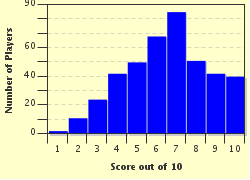Quiz Answer Key and Fun Facts
1. Blood is considered the 'Red River of Life' because it has several vital functions. Which of these is NOT a function of blood?
2. When a liquid is used as a means of transport, its flow is of great significance. One factor affecting flow is viscosity. Certain foods we eat cause our blood to become too thin or less able to clot.
Which of these foods listed is NOT associated with thinning of the blood?
3. An important consideration of a river is its chemistry (salts, nutrients, oxygen content and pH), as life depends upon these things. The same is true of blood.
What is the normal pH of blood?
4. Albumin is a special protein found in plasma. Among other things, it serves to maintain the oncotic pressure of blood. This pressure helps to pull excess water and waste (from cell metabolism) back into the blood.
Which of these features might a person with low albumin level manifest?
5. An important component of blood is red blood cells. Which of these features listed is NOT true of red blood cells?
6. Blood circulates within the body in a closed system of blood vessels. If the integrity of a vessel is compromised, bleeding occurs. How can one tell if blood is escaping an ARTERY?
7. The main course of a river is referred to as its trunk. If we were to draw a parallel, which of the following blood vessels would be the "trunk of the arteries"?
8. In riverine terms, a delta is a triangular shaped area at the river mouth which divides into many channels where the flow is considerably reduced.
If for the purpose of this quiz, we put two deltas together with bases adjacent, which category of blood vessels would this simulate?
9. In the same way as a river has tributaries, blood flows to various body parts through special branches of blood vessels. By what special name is the system of vessels supplying the brain called?
10. One single pint of blood donated can be used to save the lives of three or more different people.
Source: Author
yency
This quiz was reviewed by FunTrivia editor
crisw before going online.
Any errors found in FunTrivia content are routinely corrected through our feedback system.

